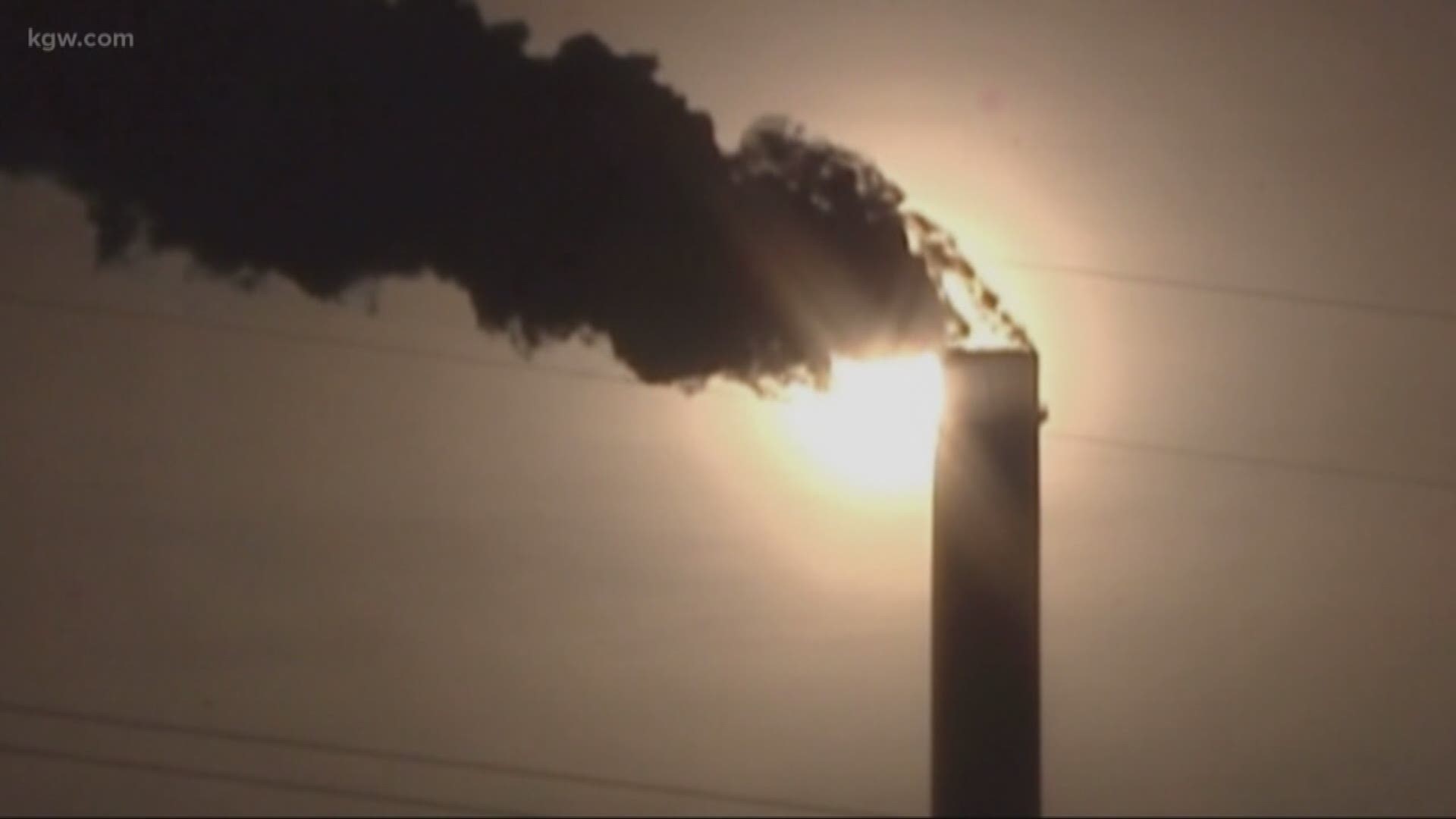SALEM, Ore. — After years of failed attempts, Oregon is poised to enact a cap-and-trade program to combat climate change. Unlike past attempts, this version comes from the governor’s office rather than the state legislature.
The Oregon Environmental Quality Commission will meet next week to vote on the Climate Protection Program, a proposed set of rules drafted by the Oregon Department of Environmental Quality (DEQ) that would place an immediate upper limit on Oregon’s emissions from burning fossil fuels and steadily ratchet the cap down over the next 30 years.
“It’s critically important that we take action, and the Climate Protection Program can result in dramatic reductions in greenhouse gas emissions throughout Oregon,” Gov. Kate Brown said.
Oregon Democrats made back-to-back attempts to pass a legislative version of cap-and-trade in 2019 and 2020, but both versions were stymied when Republican lawmakers walked out, denying Democrats the necessary quorum to pass the legislation.
Immediately following the second failure in March 2020, Brown issued an executive order directing DEQ to implement its own version of cap-and-trade. The agency has spent the past 18 months developing the framework that will be under consideration next week.
Aggressive targets
In its report to the Environmental Quality Commission, DEQ said it received over 7,500 public comments about the proposed plan, 75% of which asked for fast action to combat climate change and deep cuts to emissions. Other comments expressed concerns about affordable compliance options for businesses regulated under the plan, as well as increased fuel costs for consumers and small businesses.
The agency said it tightened up the plan in response to the feedback; the original draft set targets of a 45% reduction in emissions by 2035 and an 80% reduction by 2050, in keeping with the metrics outlined in Brown’s executive order, but the final version raises those targets to 50% by 2035 and 90% by 2050.
The plan primarily impacts three types of businesses: liquid fuel suppliers, natural gas utilities and “stationary” emitters, meaning companies that produce significant emissions as a byproduct of their fabrication processes such as steel mills, cement makers and semiconductor manufacturers.
DEQ’s report estimated that 61 large businesses — meaning companies with at least 50 employees — would be directly affected by the rules, either immediately or at some point in the next 30 years as the emission limit tightens.
The report includes a list of 32 companies that could be impacted beginning immediately in 2022, including Northwest Natural Gas, several vehicle gas suppliers, the Ash Grove Cement Company and Intel’s Aloha and Ronler campuses.
Reduction mechanism
Rather than charging businesses for each metric ton of carbon emitted, DEQ would issue free “compliance instruments,” each of which would essentially be a permit to emit one metric ton of greenhouse gas. The annual number of available instruments will decrease over time, but companies can trade unused compliance instruments or bank them for future years.
Companies would face fines if they don’t eliminate their excess emissions or cover them through other methods included in the plan. One option is to contribute funding to an approved “Community Climate Investment” (CCI) entity. CCIs are nonprofits or other groups that will invest in projects that reduce greenhouse gas emissions.
RELATED: Experts detail Oregon forest damage in aftermath of June heat dome; long term effects unknown
In a hypothetical example outlined in the DEQ report, a company that emits 1 million tons of carbon annually might initially be issued 950,000 compliance instruments, meaning it would need to either eliminate the remaining 50,000 tons or find another way of permitting them such as through CCI investments.
Fast forward a few years and the hypothetical company would only receive 800,000 compliance instruments, meaning it would need to further reduce its own emissions or increase its CCI investments (there is an upper limit to how much of its overall emissions a company is allowed to offset through CCI investments, and the cost of CCI credits goes up over time).
The DEQ report estimated that the cost of reducing emissions for natural gas companies could range from $64 to $188 per metric ton reduced. For liquid fuel providers, the estimate was $50 to $55 per metric ton reduced, and the estimate for stationary businesses was $47 to $190 per metric ton reduced.
Cost concerns
The public comments that were critical of the program generally focused on concerns about compliance costs. In a lengthy letter included in the DEQ report, the Oregon Business and Industry association wrote that DEQ’s proposal would not adequately control costs to impacted businesses and “will have a domino effect on families, jobs, cost of goods and services and critical public services.”
The association argued that the planned CCI availability is too low and the program’s other compliance options are too limited and could lead to market volatility if, for example, fuel suppliers were to choose to sell less fuel in Oregon in order to meet the targets, driving prices up for consumers.
“One result of the extremely restrictive structure of the proposed rule is likely to be that the only way for businesses to comply with this program is to limit their participation in the Oregon market or leave it altogether,” the association wrote.
The DEQ report did acknowledge that the plan carries risks of impacts such as rising fuel prices or businesses opting to move their operations out of the state, but said that the plan includes efforts to mitigate those risks. Oregon is also pursuing separate initiatives aimed at decreasing the demand for fossil fuels, the agency noted, such as spurring the adoption of electric vehicles.

